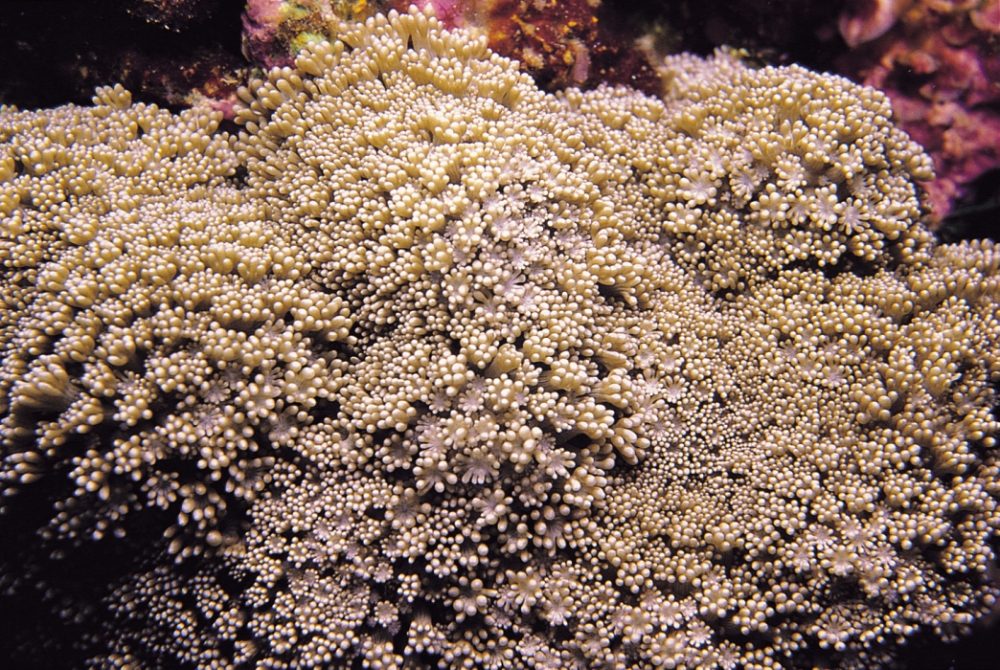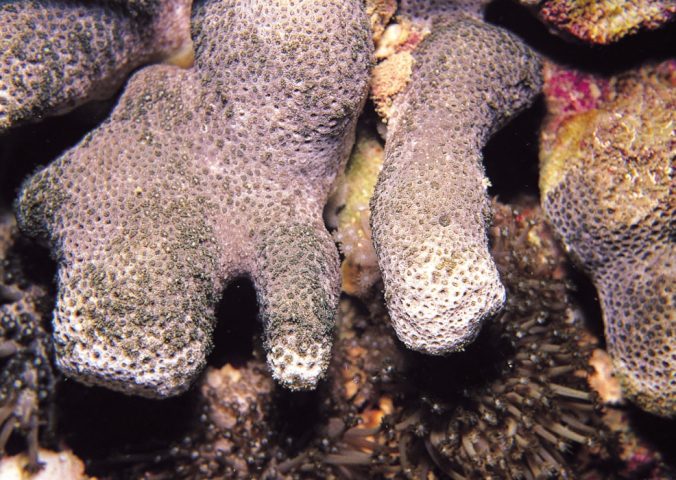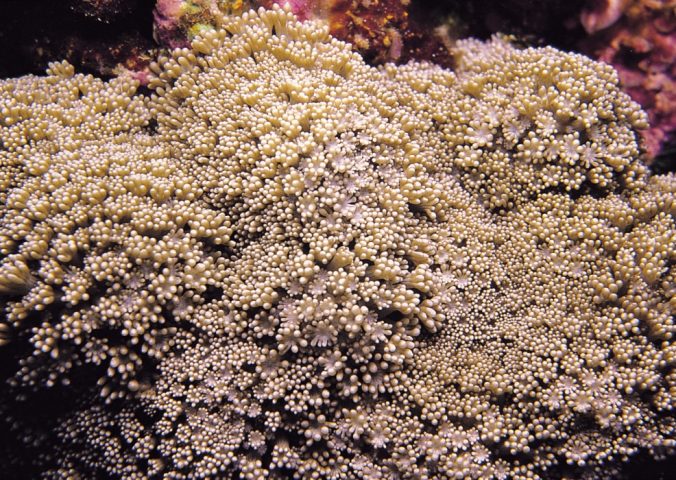About
Due to its attractive appearance Alveopora excelsa is often targeted for the aquarium trade across South East Asia.
It is also particularly susceptible to coral bleaching and is ranked as having the highest bleaching response when subjected to sustained periods of high water temperatures.
Alveopora excelsa form large colonies perhaps 2 metres across and composed of many small polyps. The polyp skeleton is a dusky pink colour however, with tentacles extended, colonies transform into a field of golden brown, sac-like tentacles, an appearance which makes this species particularly attractive and popular within the aquarium trade.
There is no specific population trend data for this species but it is known to be uncommon within its range.
- Order: Scleractinia
- Family: Poritidae
- Trend: unknown
- Depth Range (m): 3 - 30
EDGE Score
Distribution
Alveopora excelsa is found in the central Indo-Pacific, South-east Asia, north to the waters off Japan.
Habitat and Ecology
This species is primarily found on exposed shallow reef slopes down to a relatively deep maximum depth of 30m.
As with most hard corals, this species is a zooxanthellate organism meaning that it houses small photosynthetic algae (zooxanthellae) through which it obtains energy. Additional nourishment is provided through the gathering of prey with its extended fleshy polyps.


